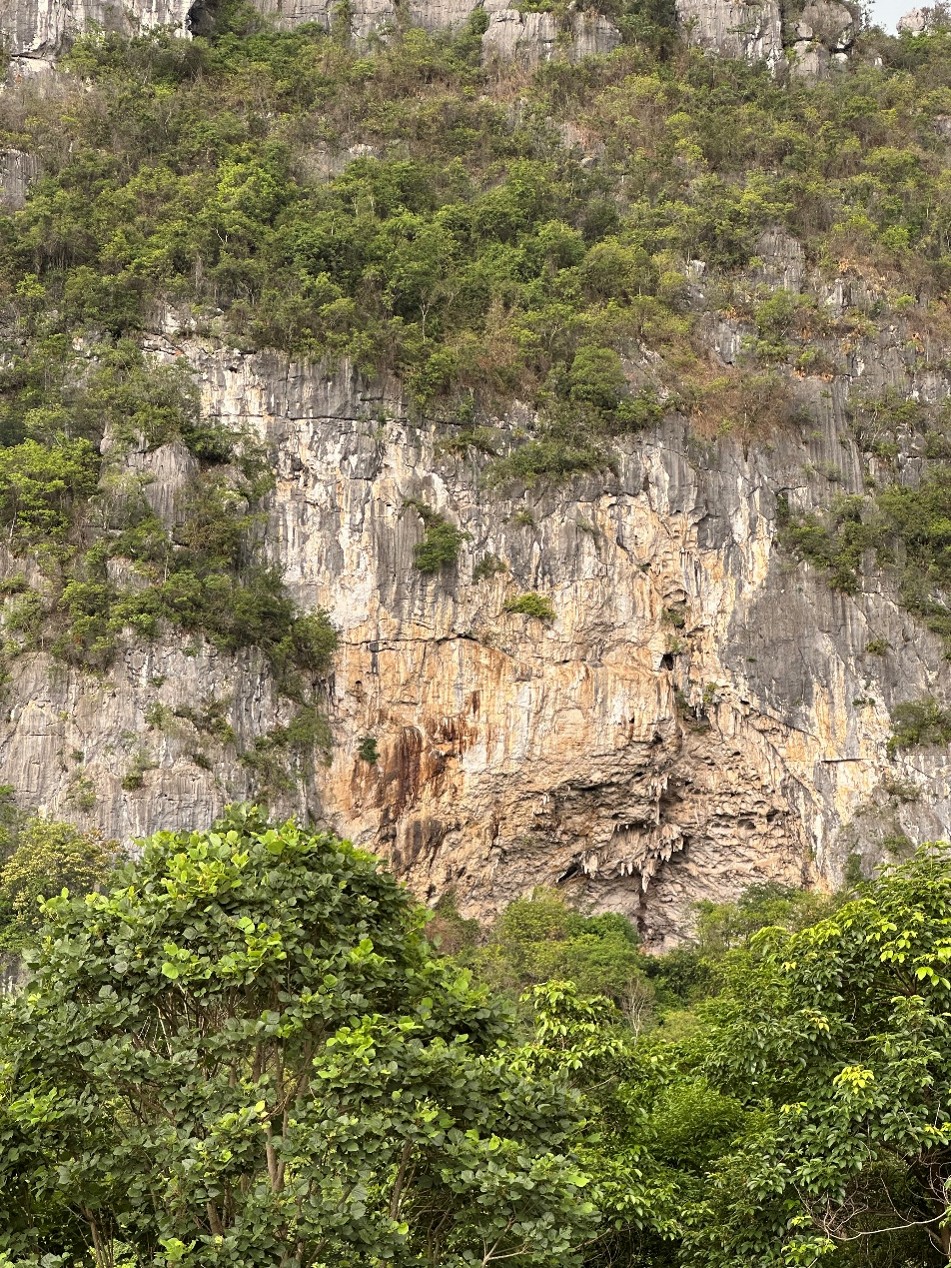Mysterious black marks reveal home of rare monkey


Visitors to the karst hill landscape of Guangxi's Zhuang autonomous region in southern China may notice mysterious black smudges on the cliff faces. While these stains might appear natural, they're actually fecal markings left by a rare monkey: the white-headed langur.
The species can mainly be found in a narrow zone between the Zuojiang and Mingjiang rivers in Chongzuo, South China's Guangxi Zhuang autonomous region. Forested limestone ridges, cliffs, crevices and caves define the rugged karst landscape that provides a perfect habitat and highly specialized ecological niche.
As its name suggests, a tuft of white fur covers the head. But when they first come into the world, mother nature has covered these babies in a glossy, fluffy, golden-orange fur layer. After nearly a year, they begin to resemble that of the adults, first turning gray before finally becoming black.
These leaf-eating primates have large salivary glands that break down plant cellulose, lubricate food passage, and moisten the digestive system. They are active during the day and most active at dawn and dusk, using caves and rock crevices as safe sleeping sites.
- Mysterious black marks reveal home of rare monkey
- Chinese, UK youth collaborate for conservation program
- China moves to tackle unfair competition in cyberspace with legal revision
- Nanjing pharma company develops anti-insomnia drug
- Coast guard conducts patrols near Jinmen amid fishing moratorium
- Mainland slams Lai's remarks as separatist, provocative





































